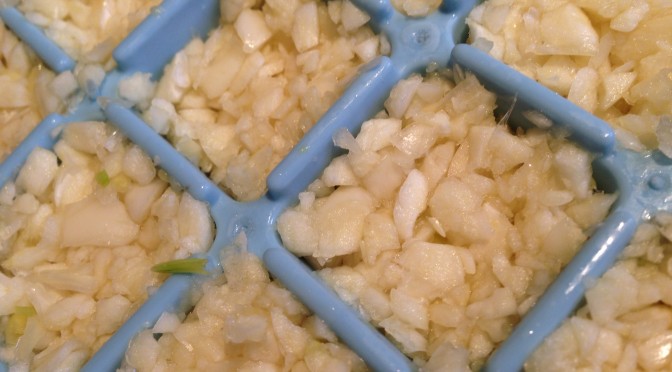One of the great joys in my life is to come across a new science demo, particularly if it’s an elegant, simple one. I can take credit for introducing one of my favourite science communicators, Michael de Podesta, to this demo of the motor effect. Michael kindly calls it the “Alom Shaha Motor” but I can only wish that I came up with this idea myself. Jonathan and I have made a film about this, but here’s Michael’s own, elegant, simple film of the demo.
Monthly Archives: February 2014
Electromagnetic induction
Thanks to one of the IOP’s twitter streams for reminding Alom and I of this film, which we’d rather forgotten about. Unlike many of our other demo videos, it wasn’t made for the IOP/National STEM Centre, nor for Get Set Demonstrate. Rather, we threw it together to enter a slightly weird competition. We held out little hope of winning, but the prize fund was considerably larger than any demo filming budget we’ve ever secured, so we had the (odd?) thought of using the winnings to fund the project we actually wanted to do.
Happily, our friends Andrew and Sharmila Hanson won, and did fabulous things with the cash, so we’re hardly complaining. (Oh, and: belated happy birthday, Andrew!).
Our EM induction film, meanwhile, ended up being loaned to the National STEM Centre so it could sit alongside the films we did make for them. The YouTube version above is still higher-quality, if you want to download it.
Funny how things turn out, sometimes. Also: I’ve just received a text from Alom complaining about how rough he looked three years ago. Tee-hee.
Freezing Garlic
It’s the end of half-term and I haven’t really had a break. Jonathan and I spent the first three days of this week in Cambridge, working on a set of films for the lovely people at SAPS. I’ve spent the rest of the week doing some much needed re-decorating of my bedroom and, of course, marking stuff ready for the return to school.
The picture above is of garlic, which I peeled and chopped (in a blender thingy) earlier today, before freezing in an ice cube tray. It took me about 30 minutes to do this (while faffing about on Twitter and listening to music) and I’m glad I had the time to do it because that garlic is going to make my life just that little bit easier over the next couple of weeks.
I love cooking and I use a lot of garlic when I do – everything from a whole bulb in my dal to a few cloves fried with chilli in oil to make the simplest but most delicious of pasta sauces. But I hate peeling and chopping garlic and having it pre-peeled and chopped in this way removes the one part of many recipes I don’t like doing. (I know you can buy it like this in jars but, I swear, none of the stuff from the shops is as good as this, nor as cheap).
This little act of preparation, of being organised and ready for cooking in the future, really does make a huge difference to my enjoyment of cooking.
I think it’s the same with teaching – I always enjoy it more when I am prepared and organised to teach.
LED Rectifier
Alom and I are filming again this week so things are likely to be a bit slow here, but the above caught my eye. I have to stare at the circuit diagram for longer than I’d care to admit to remember work out what’s going on in a rectifier, but this is a neat visualisation and sanity check.
Spotted on the ever-lovely PTNC mailing list, from Will Hall.
The dotted line
Occasionally I’m drawn in to youtube via links and twists so convoluted that I can no longer remember where I began. That’s how I came across this delightful video of M.I.T.’s Walter Lewin this week:
It’s interesting to see discussions around Lewin and pseudoteaching, but that doesn’t deny his high production values here. Every lecture was, he claims, rehearsed at least three times in full before his first audience was brought in. Clearly, when he decides to do something, he is interested in mastering the art. Even if that art, at first glance, appears mundane.
There are many things that we do that could be tweaked and improved. All we need to do is look at ourselves from the outside occasionally and see what else we can give. If we do something many times during the day, in front of an audience, we may as well learn to do it with finesse. If we’re on a stage, we should deserve it.
Seeing that drawing a dotted line can help make us engaging, memorable and inspirational, perhaps like me, you too want to draw dotted lines like Walter Lewin. You’re in luck.
Or perhaps you’d just like to rock your syncopated head to his dubstep. You can do that too.
Of course you can. The internet is like that.
How Should We Teach Maths?
Our film, Demo: The Movie, touches on ideas about how to teach science, but Jonathan and I would really love to make a documentary with the title “How Should We Teach Science?” Alex Bellos is a populariser of maths who’s been lucky enough to make a Radio 4 documentary exploring how maths is taught in our schools today and looking at the science and evidence which supports different approaches. We’re jealous. You can listen to it by clicking here.
Eddy currents
Alom and I are filming at the moment, hence things being rather quiet around here. However, the above caught my eye. This demo is typically done with a long length of copper pipe, and the magnet takes many seconds to fall through. It’s effective on a stage.
The tall narrow pipe, however, is precisely the wrong shape to film, and on video the demo doesn’t work so well. This shorter length of fatter pipe, with an appropriate magnet, has more impact on camera.
Same principle, same demo… but different treatments for different audience contexts. So, lessons for us all:
- Don’t assume that the way you’ve seen a demo performed is the best way. Always look for improvements.
- It’s not just the demo that matters, it’s the way you use it.
That separation of ‘content’ and ‘treatment’ is, for me, an absolutely key concept.
Tip of the hat to my dad for sending this in.


